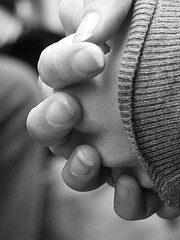
Pope Francis has addressed income inequality, immigration, housing, and mass incarceration—in Philadelphia he will visit with inmates at the Curran-Fromhold Correctional facility—all issues that he has said are barometers for human compassion. And it is expected that he will challenge this country to confront the uncomfortable questions and history that has brought us to this critical point.
Followers of all religions, and no religion, widely agree that this Pope is sharing messages of community, compassion, and charity through pretty radical words and actions for a Pope, even though the irony of this being considered radical is lost on many.
Community organizing has always involved faith—it is faith in action—and as the field has evolved, community development has involved faith-based institutions, as they tend to be the oldest and most established places in distressed communities, with members who are long-time residents invested in their neighborhoods. One of the oldest of its kind, The Abyssinian Development Corporation in Harlem, New York, was founded over thirty years ago by Abyssinian Baptist Church, and among other things, has developed over 1,500 units of affordable housing with the stated goal of preventing displacement of residents.
Large scale, faith-based organizing is unparalleled, and groups like Gamaliel wage regional and national campaigns around issues such as education and transportation equity through interfaith action. Via leadership training and policy work, Gamaliel says its organizing, “draws on struggles for justice by people of faith stretching back thousands of years and spanning many nations, faiths, and cultures.” As Gamaliel and this 2013 Shelterforce article states, organizations like theirs have leadership that more closely reflects the demographics of our country with women and young people of color.
At the neighborhood level, churches, synagogues, and mosques work to fill the holes, and shortcomings, in our social safety net. The Interfaith Hospitality Network (IHN) is a national group of churches and synagogues that host homeless families, giving them temporary shelter, food provided by parishioners, and the opportunity to work on a plan to get back on track. According to a volunteer, one of IHN’s goals is to keep two-parent families together, where shelter facilities would most likely require them to be separated.
Amidst the data-driven period the field is in, I understand that the language it uses has changed to resonate more with the public as well as decision-makers, who appreciate and demand things like “measurable outcomes.” However, as I read about and report on organizations big and small, I want to know where compassion currently sits for our readers.
All faiths have a day of reflection during a week filled with work, when one is supposed to stop to contemplate and consider their place in the world. I hope you will share with us where compassion, love, and charity sit in your daily work.
(Photo credit: Keith Riley-Whittingham, via flickr, CC BY-ND 2.0)






Comments